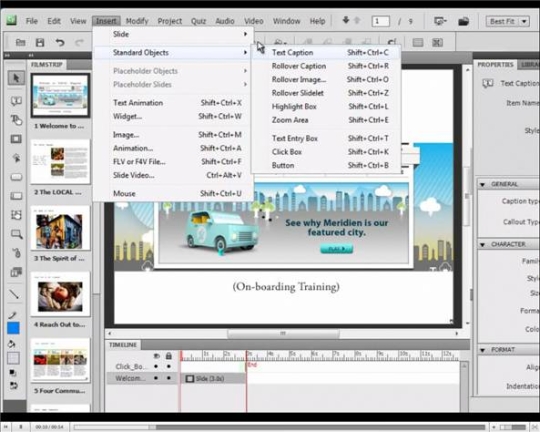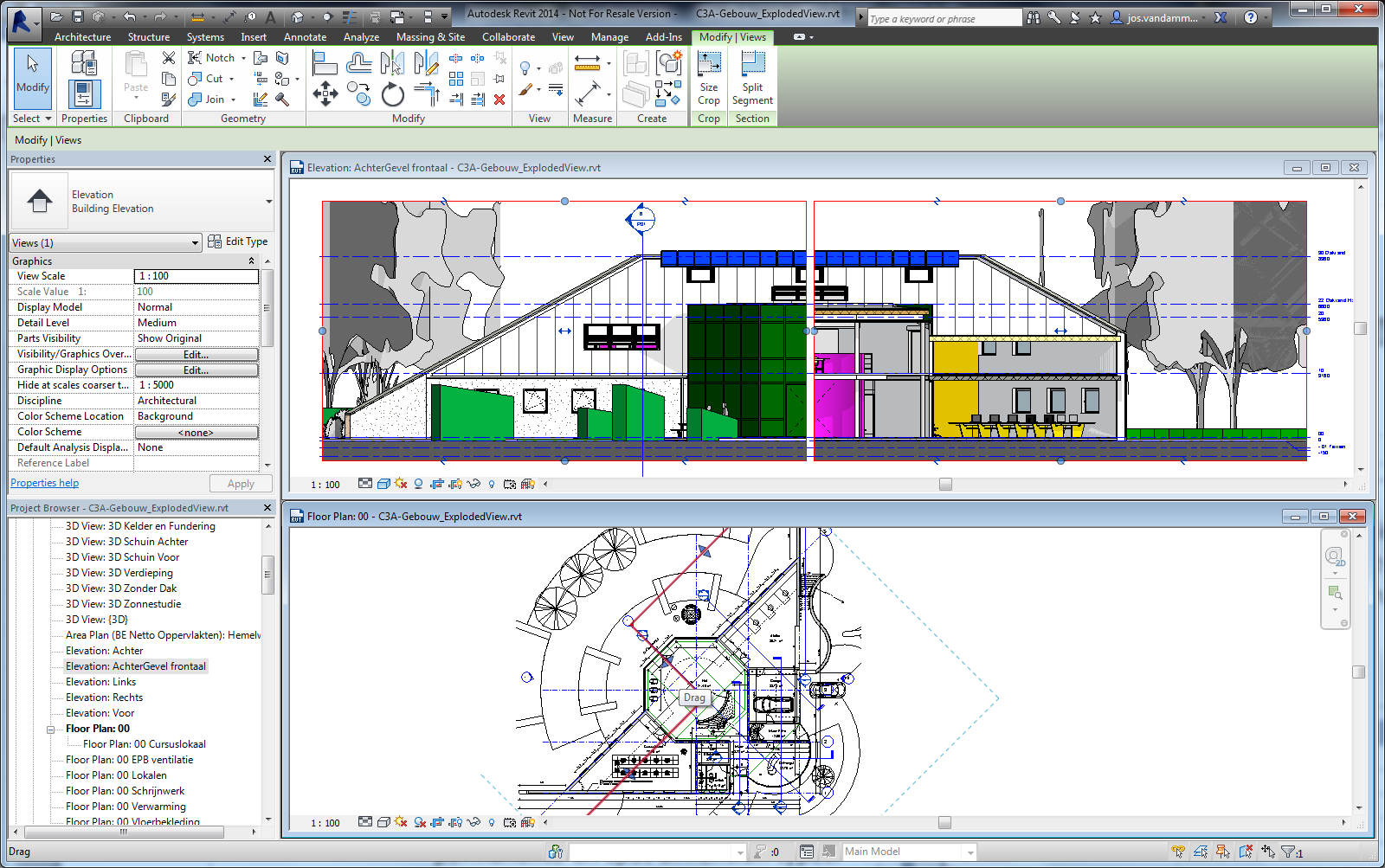Adobe Captivate For Mac

Adobe Captivate is a rapid responsive authoring tool that is used for creating elearning content such as software demonstrations, software simulations, branched scenarios, and randomized quizzes in Small Web Formats (.swf) and HTML5 formats.
|
If you have purchased a version of Adobe Captivate, and you no longer have the installation media, you can download installers from this page.
- You need your Captivate serial number to complete the installation. Need help
finding your serial number?
Signin to My Adobe to find serial numbers for registered products.
Or, see Find a serial number. - If you do not have a serial number, you can use Captivate as a trial for 30 days.
- Make sure that your system meets the requirements for Captivate. For more information, see System requirements.
- After downloading the installation files, see these instructions to extract the files and install your product.
- Having trouble? Get help from our community experts.
Note:
Wherever you are required to download two files, Adobe recommends that you download the files in the same location.
Then, run the exe file. The installer extracts the files required for the installation from the other archive file.
If you face any issues in downloading or installing, write to us at CaptivateHelp@adobe.com.
How long does it take for download? See Estimated download times.
To install Captivate (2017 release), refer the Install guide.
Learn how to access previous versions of non-subscription apps.
Note:
Terms of Use
Your use of Adobe Captivate Software is governed by EULA located at https://www.adobe.com/legal/licenses-terms.html. The software may contain third party software which requires notices and/ or additional terms and conditions located at http://www.adobe.com/go/thirdparty (or a successor website thereto)
| JAVA SE 12.0.2 |
|
| JAVA SE 11.0.5(LTS) |
|
| JAVA SE 11.0.4(LTS) |
|
| JAVA SE 11.0.3(LTS) |
|
| JAVA SE 11.0.2(LTS) |
|
| JAVA SE 8u231 |
Java SE Runtime Environment
|
| JAVA SE 1.8.0_u221 |
Java SE Runtime Environment
|
| JAVA SE 8u212 |
|
| JAVA SE 8u202 |
|
Stay ahead of the curve. Join the Adobe eLearning Community to know what’s the latest and greatest with Adobe Captivate and eLearning.
Adobe eLearning Community is a platform to connect with your peers, engage with experts, and pick top Adobe brains on just about anything related to eLearning.
This is a one-stop shop for anything and everything about Adobe Captivate and the eLearning world.
Browse blogs, showcase your work and get expert feedback, write testimonials and reviews, and much more.
Find out what's new in the eLearning Community portal.
Twitter™ and Facebook posts are not covered under the terms of Creative Commons.
Legal Notices Online Privacy Policy
| Developer(s) | Adobe Systems |
|---|---|
| Stable release | |
| Operating system | Microsoft Windows, Mac OS X |
| Type | eLearning and screencasting |
| License | Commercial |
| Website | www.adobe.com/products/captivate |
Adobe Captivate is an authoring tool that is used for creating eLearning content such as software demonstrations, software simulations, branched scenarios, and randomized quizzes in Small Web Formats (.swf) and HTML5 formats.[1][2]
It can also convert Adobe Captivate-generated file formats (.swf) to digital MP4 (.mp4) formats which can be played with media players or uploaded to video hosting websites. For software simulations, Captivate can use left or right mouse clicks, key presses and rollover images.
It can also be used to create screencasts, and to convert Microsoft PowerPoint presentations to .swf and HTML5 formats.
History[edit]
While the product started out as a pure screen recording utility known as Flashcam (Nexus Concepts 2002), it evolved into an E-learningauthoring tool after San Diego-based eHelp Corporation acquired Flashcam and released it as RoboDemo. Eventually, software firm Macromedia acquired eHelp to gain RoboDemo. Shortly before Adobe Systems acquired Macromedia, they changed the name of the product to Captivate.
Versions[edit]
- Adobe Captivate (2019 release) (August 2018) The 2019 release of Adobe Captivate adds new features including creating Virtual Reality (VR) projects for immersive eLearning, creating interactive videos for your demos, enhancements to Fluid Boxes, Live Device Previews for your VR projects and responsive courses, smart video recording that includes your webcam feed, and converting your PowerPoint presentations to responsive projects.
- Adobe Captivate (2017 release) (April 2017) The 2017 release of Adobe Captivate adds new features including improvements in responsive design through the use of Fluid Boxes and text scaling, the ability to save legacy non-responsive projects as responsive, integration of Adobe's Typekit to increase the range of fonts available to users, and the ability to customize closed captioning
- Adobe Captivate 9 (August 2015) Adobe Captivate 9 adds new features including multi state objects, improved effects and motion paths, creating a content draft on an iOS device, and publishing to the new Adobe LMS known as Captivate Prime. Adds the integration of eLearning Brothers Templates.[3]
- Adobe Captivate 8 (May 2014)[4]
- Adobe Captivate 7.0 (June 2013) Wide range of drag-and-drop components such as games, quizzes, and learning modules. HTML5 conversion for Microsoft PowerPoint projects. Newly bundled MathMagic equation editor for both Mac OS X and Windows versions. Enhanced accessibility support. Interactions library.[5]
- Adobe Captivate 6.0 (June 2012) Interactions (pre-built widgets), actors ( pre-built images), themes and HTML 5 support.[6]
- Adobe Captivate 5.5 (May 2011) New features include gradients, shadows, and object rotation, enhanced quiz/assessment templates, MP4 output option, YouTube publishing option, pay-as-you go subscription licensing option. Available as a stand-alone product or as part of the Adobe eLearning Suite 2.5 bundle.[7]
- Adobe Captivate 5 (May 2010) Unlike previous versions that were derivative of Captivate 2 and carried over notable bugs and technological limitations, Captivate 5 was written from scratch. Features include a new GUI similar to other Adobe CS family products, built-in animation effects, extended Microsoft PowerPoint support, extended video embedding and control (it functions similarly to audio in older versions), master slides and object styles. Developers are able to publish their content to Acrobat.com and use it as a quasi-Learning management system. Adobe Captivate 5 is available separately or as part of Adobe eLearning Suite 2.[8]
- Adobe Captivate 4 (Jan 2009) New features included SWF commenting, professional project templates, customizable widgets, roundtrip PowerPoint workflow, table of contents and aggregator, text-to-speech functionality, variables and advanced actions, expanded output options, Adobe Photoshop layer support. This version has features for collaboration, extends Adobe Captivate and interacts with other Adobe products like Bridge, Soundbooth, Photoshop, Adobe Device Central, etc. This version of Adobe Captivate is also part of the new Adobe eLearning Suite.
- Adobe Captivate 3 (July 2007) New features included multimode recording, automatic rerecording, XML export/import (XLIFF) for localization, find and replace, audio recording with preview, randomized quizzes, answer shuffle, new question types (sequence/hotspot), PPT import with animations, rollover slidelet, and slide transition effects. This version has an Adobe Captivate logo preloader added to the beginning of all simulations, but this can be changed to a generic preloader. It would eventually be included in the Adobe Technical Communication Suite.
- Adobe Captivate 2 (October 2006) New features included branching view, simulation wizard, library, interaction dialog, zoom, skins and menus, Flash Video (FLV) support, export to Flash 8, step-by-step documentation output, customization options, and PENS.
- Macromedia Captivate (October 2004) New features included timeline, audio editing, demonstration and simulation recording modes, customizable quiz questions, export to Flash MX 2004, smart full motion recording, 508 compliance, SCORM 2004, and Breeze integration.
- RoboDemo 5 and eLearning Edition (Fall 2003 by eHelp Corporation) New features included tighter integration with Flash via FLA and SWF import, full-motion (real-time) recording, SCORM 1.2., video import, multiple copy/paste, undo, shortcut controls, grid, alignment toolbar, filmstrip view, background audio, animated highlighters, and project resize.
- RoboDemo 4 and eLearning Edition (Spring 2003 by eHelp Corporation) New features included AutoText Captions, Animated Text Effects, PowerPoint style interface, publish as email attachment, customize capture key, SCORM, Quiz question slides, support for Questionmark Perception.
- RoboDemo 3 (Fall 2002 by eHelp Corporation) New features included Powerpoint and AVI import, interactive text entry boxes, interactive click boxes, JavaScript options, and scoring.
- RoboDemo 2 (May 2002 by eHelp Corporation) First version with major FlashCam bug fixes (therefore, it was called version '2').
[10][non-primary source needed]
File formats[edit]

Project files[edit]
.cptx: Captivate 9.x, 8.x, 7.x, 6.x and 5.x project files, which can be edited with the Captivate software. Note that cptx files created using older versions of Captivate can be opened in newer versions of Captivate. However files from newer versions of Captivate cannot be backported to older versions..cpdx: Captivate 9.x, files that are created using the Captivate Draft application on the iPad..cpvc: Captivate 6.x onwards, these are video project files (when you create a video demo)..cptl: Captivate project template files.cptm: Captivate project Theme files.crev: Captivate Review File. In version 4 and later, a project can be reviewed in a collaborative way. This file is published when a project is sent out for review. A Review Application can open this file and can accept comments which can be seen in the main Captivate window. The Review Application is an Adobe AIR application and can be installed on any machine without requiring Adobe Captivate license..aggr: Adobe Captivate Aggregator file format. The Aggregator is a new application that is installed along with Adobe Captivate 4. It can take multiple Captivate modules and publish an aggregated course with a table of contents..cp: Captivate project files which can be edited with the Captivate version 4.0 software.cpdt: Captivate design file which was available for Captivate version 4.0 only
Interim files[edit]
.cprr: XML file to store users action when recording scripts during re recording feature. This file can be used to automatically imitate users action in another session of Adobe Captivate recording..fla: The project files of Adobe Flash Professional IDE. Flash authoring software can edit FLA files and compile them into .swf files.
Output files[edit]
.html: HTML5 output. This is a W3 specification file format that defines the fifth major version of HTML..swf: Compiled Adobe Flash format that can be played with Adobe Flash Player..mp4: MP4 digital multimedia file format that is commonly used to store video and audio..qml: An XML-based file format that is interoperable with QuestionMark QuestionMark Perception. It the basis of QTI.
See also[edit]
References[edit]
- ^'Adobe Captivate Help Publish projects as SWF files'. helpx.adobe.com. Retrieved 2015-12-29.
- ^'Adobe Captivate Help Publish projects as HTML5 files'. helpx.adobe.com. Retrieved 2015-12-29.
- ^'Adobe Integrates eLearning Brothers Templates into Captivate 9'. VentureBeat. Retrieved 2015-12-29.
- ^'Adobe Captivate 8'. Captivate (blog). Adobe. 2013-06-03. Retrieved 2013-06-05.
- ^'Everything You Need for eLearning with Amazing Adobe Captivate 7'. Captivate (blog). Adobe. 2013-06-03. Retrieved 2013-06-05.
- ^'Introducing Adobe Captivate 6: Sensational eLearning Authoring'. Captivate (blog). Adobe. 2012-06-15. Retrieved 2012-06-25.
- ^'Read All About It – Introducing Adobe Captivate 5.5 and Adobe eLearning Suite 2.5'. The m-Learning Revolution (blog). R Jacquez. 2011-05-26. Archived from the original on 2012-01-16. Retrieved 2012-06-25.
- ^'Just launched! Captivate 5 and Adobe eLearning Suite 2'. Captivate (blog). Adobe. 2010-05-04. Retrieved 2012-06-25.
- ^BlogConsulting.com. 'The all-new Adobe Captivate 9: From storyboarding to storytelling'.
- ^'Adobe Captivate 9 - Features'. Adobe Captivate Features. Adobe Systems.
